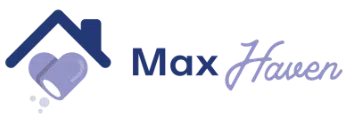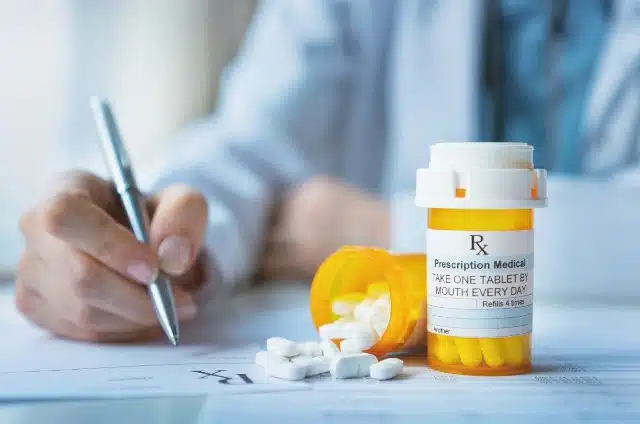In hospice care, medication management is a critical aspect that demands precision and careful oversight. Errors or inefficiencies can significantly affect the quality of care and the patient’s quality of life. With an array of medications to manage symptoms and provide pain relief, pharmacological care is complex and requires a robust strategy to manage effectively.
With numerous hospices of varying types and sizes across the U.S., there is a universal need for systems that ensure accuracy, efficiency, and sensitivity. Let’s explore the transformative impact that technology has on medication management within hospice programs.
Enhanced Tracking of Medication Usage
One significant advantage of technology is the ability to track medication usage meticulously. Technological systems can be utilized to record when and how medications are administered, including the dose, time, and any side effects noted. This information is critical, as it helps to prevent the dangers associated with overmedication or undermedication, both of which can profoundly affect a hospice patient’s comfort levels. It also aids in ensuring that inventory is accurately managed, which can prevent waste due to expired drugs and ensure that essential medications are always in stock.
Automation and Efficiency
Among the key benefits of integrating technology into hospice medication management is the automation of repetitive tasks. This creates a more efficient workflow, freeing up valuable time for staff to focus on patient care rather than administrative duties. Automation also means that prescribers can quickly make and communicate changes to medication orders, minimizing the time it takes for patients to receive the right medications.
Accuracy and Safety
The intersection of accuracy and safety in medication management is a critical juncture in hospice care, where patients are at their most vulnerable and the margin for error is virtually nonexistent. The commitment to patient safety is paramount, and technology serves as a robust ally in this regard. By embedding advanced tools into everyday practices, hospices can mitigate risks and enforce a standard of precision that upholds the highest quality of care.
Barcoding for Precision
Barcoding technology is a prime example of how accuracy can be enhanced in the hospice setting. Medications are barcoded and scanned before administration, ensuring that the correct drug is given at the correct dose and at the correct time to the correct patient. This process helps eliminate human errors that can occur with manual checks. Standard barcoding protocols are instrumental in maintaining a ‘five rights’ check system, which is an essential part of medication safety practices.
Electronic Medication Administration Records (eMARs)
Electronic Medication Administration Records (eMARs) have replaced paper-based records in many hospices, offering a digitized approach to tracking medication orders and administration. With eMARs, each entry is time-stamped, legible, and easily auditable, which not only enhances accuracy but also ensures compliance with regulations. The implementation of eMARs minimizes transcription errors and omits the need for deciphering handwriting, which has traditionally been a source of medication errors.
Moreover, eMARs systems are often integrated with alert mechanisms that notify caregivers if there’s a risk of a missed dose or a potential duplicate administration. The system can also signal when it’s time for a medication to be given or when a prescription needs renewal, ensuring the continuity of care and adherence to the prescribed treatment plan.
Decision Support Systems
Decision support systems within medication management technology can significantly improve the safety of hospice patients. These systems can provide drug interaction checks, contraindication warnings, and guidelines for dosage adjustments based on patient-specific factors such as kidney or liver function. They often integrate evidence-based protocols that guide clinicians in making the safest medication choices for their patients.
Patient Identification and Information Systems
Ensuring that the right patient receives the right medication necessitates reliable patient identification systems. Electronic systems frequently include features such as photo identification and electronic bracelets, which, when scanned, access the patient’s medication regimen directly from their records. This additional layer of verification further secures the administration process against errors.
Training and Accountability
Technological solutions also facilitate the training and education of hospice staff on medication safety protocols. Easy access to digital educational tools and monitoring software helps maintain a culture of accountability and ongoing learning, which is critical for safety.
Furthermore, with the implementation of technology in medication management, there’s typically an audit trail that enhances accountability among staff members. Each action is logged, and user-specific, fostering an environment of responsibility and meticulousness regarding medication handling.
Real-time Updates and Accessibility
The dynamic nature of patient needs in hospice care means that medication orders can change frequently. Using technology to manage these changes can lead to real-time updates to medication lists, preventing any lags that can occur with traditional paper-based systems. This immediate accessibility allows every member of the care team, including nurses, physicians, pharmacists, and even the patients’ families, to stay current with a patient’s treatment plan. It facilitates a continuity of care that is paramount in hospice settings where treatments are time-sensitive and adjustments need to be rapidly communicated.
Drug Interaction Alerts
AI-powered systems can analyze a patient’s current medication regimen and provide alerts for potential drug interactions. Such technology is important in hospice care where patients often take multiple medications, and the risk of adverse drug interactions can be high. Ensuring that all medications are compatible not only improves patient safety but also the efficacy of the medication regimen as a whole.
Increased Time for Patient Interaction
By diminishing the administrative burden on staff, technology frees healthcare providers to spend more time interacting with patients and their families. Electronic medication management can reduce the time needed for tasks like double-checking medications, transcribing orders, and documenting administration details. This increase in efficiency allows hospice workers to dedicate more energy to providing hands-on, compassionate care—a critical aspect of quality hospice service.
Informed Decision-making with Patient Records
Having immediate access to comprehensive patient records enhances the quality of decision-making by healthcare professionals. A technology-driven approach allows for the integration of medication management with the patient’s broader health records. This provides a holistic view of the patient’s condition, allergies, medical history, and previous responses to treatments. Such integrative information is invaluable when considering adjustments to medication or when responding to an emergent situation. It enables prescribers to make decisions based on a full understanding of the patient’s health, leading to better personalized care and improved patient safety.
Streamlining Regulatory Compliance
Ensuring Up-to-Date Compliance
Healthcare regulations are constantly evolving, and hospices must remain agile to accommodate these changes. Advanced technological systems can receive and integrate updates to regulations directly into their platforms, prompting necessary changes in practice to maintain compliance. This proactive feature alleviates the burden on the hospice to manually track and implement new regulatory requirements.
Quality Control and Risk Management
Technology enhances quality control by providing tools that analyze medication management processes for potential risks and areas of non-compliance. Automated checks against regulatory standards can quickly identify gaps in practice that need attention. This risk management approach helps hospices address issues before they become compliance violations, thereby reinforcing patient safety and care quality.
Reporting and Audit Trails
When it comes to demonstrating compliance, the ability to generate concise and detailed reports is invaluable. Technology that provides robust reporting features simplifies this aspect of management. Audit trails created by these systems offer transparency into all medication-related activities, showing a clear line of accountability and due diligence in the event of an examination by regulatory bodies.
Privacy and Security Protections
Staying compliant also means safeguarding patient privacy and data security as dictated by regulations such as the Health Insurance Portability and Accountability Act (HIPAA). Modern hospice management technology is equipped with advanced security measures to protect sensitive patient information, which is a key component of regulatory compliance.
MaxHaven: A Vision to Transform Hospice Management Services
Integrating technology within hospice medication management is a step towards a future where accuracy, efficiency, and patient-centric care are at the forefront. It aligns with the overarching mission to provide exceptional care to patients in their last moments of life. MaxHaven is committed to propelling this vision forward with flexible, transparent, and specialized solutions that put hospices in command of their technological needs and financial planning.
MaxHaven’s vision to transform hospice management goes hand-in-hand with the belief that every hospice, regardless of type or size, deserves access to technology that empowers them to deliver unparalleled care. Their adaptable contracts and pricing models are designed to place hospices firmly in control, ensuring that they can navigate their unique challenges while upholding the highest standards of care.




